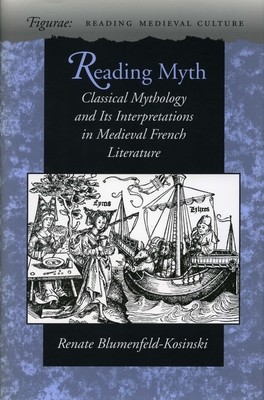
- We will send in 10–14 business days.
- Author: Renate Blumenfeld-Kosinski
- Publisher: Stanford University Press
- ISBN-10: 0804728100
- ISBN-13: 9780804728102
- Format: 15.2 x 22.9 x 2.2 cm, hardcover
- Language: English
- SAVE -10% with code: EXTRA
Reviews
Description
This book explores the appropriation and transformation of classical mythology by French culture from the mid-twelfth century to about 1430. Each of the five chapters focuses on a specific moment in this process and asks: What were the purposes of transforming classical myth? Which techniques did poets use to integrate classical subject matter into their own texts? Was a special interpretive tradition created for vernacular texts?
In Chapter 1, the author shows how Latin epic texts were reoriented for political purposes in the twelfth-century Anglo-Norman realm, gaining new depth by the addition of Ovidian elements that evoked threats of a disorder different from the struggles of classical epic. Chapter 2 analyzes the complex use of myth in the thirteenth-century Roman de la Rose, which offers new conjunctions and interpretations of myths related to language, artistic expression, and sexuality. Chapter 3 focuses on the interpretive techniques and vocabulary of the fourteenth-century Ovide moralisé, such as allegory, fable, and istoire, arguing that the Christianization of the Metamorphoses created a new Ovid in the form of a fourteenth-century friar.
Chapter 4 reveals that, although Guillaume de Machaut questioned the usefulness of mythic fables, he turned to them to invoke artistic consolation and ward off threats to his poetic voice. It also describes how Jean Froissart produced new myths by combining existing fables with newly invented elements in an attempt to dramatize the poetic creativity of his age. Finally, Chapter 5 demonstrates how Christine de Pizan offered the full range of medieval possibilities for myth: playing with the mythographic tradition, inscribing herself into Ovidian myths, offering historical explanations, rewriting myths from a pro-woman stance, and finally creating mythic universes of her own.
EXTRA 10 % discount with code: EXTRA
The promotion ends in 18d.13:40:30
The discount code is valid when purchasing from 10 €. Discounts do not stack.
- Author: Renate Blumenfeld-Kosinski
- Publisher: Stanford University Press
- ISBN-10: 0804728100
- ISBN-13: 9780804728102
- Format: 15.2 x 22.9 x 2.2 cm, hardcover
- Language: English English
This book explores the appropriation and transformation of classical mythology by French culture from the mid-twelfth century to about 1430. Each of the five chapters focuses on a specific moment in this process and asks: What were the purposes of transforming classical myth? Which techniques did poets use to integrate classical subject matter into their own texts? Was a special interpretive tradition created for vernacular texts?
In Chapter 1, the author shows how Latin epic texts were reoriented for political purposes in the twelfth-century Anglo-Norman realm, gaining new depth by the addition of Ovidian elements that evoked threats of a disorder different from the struggles of classical epic. Chapter 2 analyzes the complex use of myth in the thirteenth-century Roman de la Rose, which offers new conjunctions and interpretations of myths related to language, artistic expression, and sexuality. Chapter 3 focuses on the interpretive techniques and vocabulary of the fourteenth-century Ovide moralisé, such as allegory, fable, and istoire, arguing that the Christianization of the Metamorphoses created a new Ovid in the form of a fourteenth-century friar.
Chapter 4 reveals that, although Guillaume de Machaut questioned the usefulness of mythic fables, he turned to them to invoke artistic consolation and ward off threats to his poetic voice. It also describes how Jean Froissart produced new myths by combining existing fables with newly invented elements in an attempt to dramatize the poetic creativity of his age. Finally, Chapter 5 demonstrates how Christine de Pizan offered the full range of medieval possibilities for myth: playing with the mythographic tradition, inscribing herself into Ovidian myths, offering historical explanations, rewriting myths from a pro-woman stance, and finally creating mythic universes of her own.


Reviews